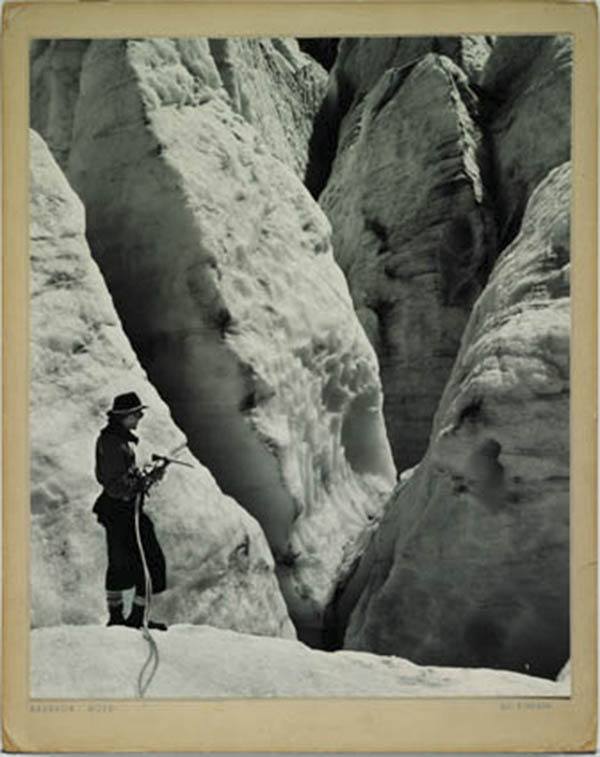he photographs and writings of George L. Kinkade were a revelation for Hillary Pittenger, White River Valley Museum’s curator of collections.
For nearly a decade the museum’s collection of prints – featuring the amateur nature photography of Kinkade, an Auburn native and typesetter for the long-defunct Auburn Globe Republican newspaper – sat unappreciated in the museum’s storeroom.
“We’ve had the collection for a while, but it really came to our attention when a junior member of the photo club George was a member of, called Photo Alpine, came to us and said, ‘Wow, you have this collection from a guy I know,'” Pittenger said.
Several of the dozen, black-and-white, 16-by-20-inch prints in the collection, accompanied by Kinkade’s writings, form the museum’s newest exhibit, Alpine Photography of George L. Kinkade, which runs from Jan. 15 to June 1.
Pittenger, who assembled the collection, said she was overwhelmed once she began digging into the collection to prepare it for display.
“I just fell in love with him,” Pittenger said. “He’s my favorite historical figure now. He was so modern and so forward thinking. The things he wrote don’t seem so surprising to us now. … that a person’s personality really comes out in the wilderness and that everybody should spend some time there.
“He talks about the immensity of time and space and things that were not generally public discourse in Auburn in the 1930s,” she added. “And he also saw so many changes in the wilderness areas. He was born in 1906 (and died in 1975), so he actually saw the creation of the Olympic National Park. He saw the creation of the North Cascades National Park in the 1960s. He was a big advocate of wilderness areas being preserved so you could go and see landscapes like these.”
Artistically, the photos reveal an eye for composition, texture and light that transcends the typical amateur snapshot fare.
“I just thought they were so well done for someone who was doing amateur work,” Pittenger said. “He could have just taken his little Kodak camera and that would have been enough if he just like how the mountains looked. But he spends the time learning how that photography worked. He was really doing a piece of art. He wasn’t just documenting how a mountain was supposed to look, he was trying to evoke an emotion and the sense he got from being on a peak of a mountain or looking up at a glacier. And he was such a fan of texture and seeing how rich he could make the mountain seem without color. To me, that makes them even more evocative.”
For museum admission, hours and more information, visit http://wrvmuseum.org/.



